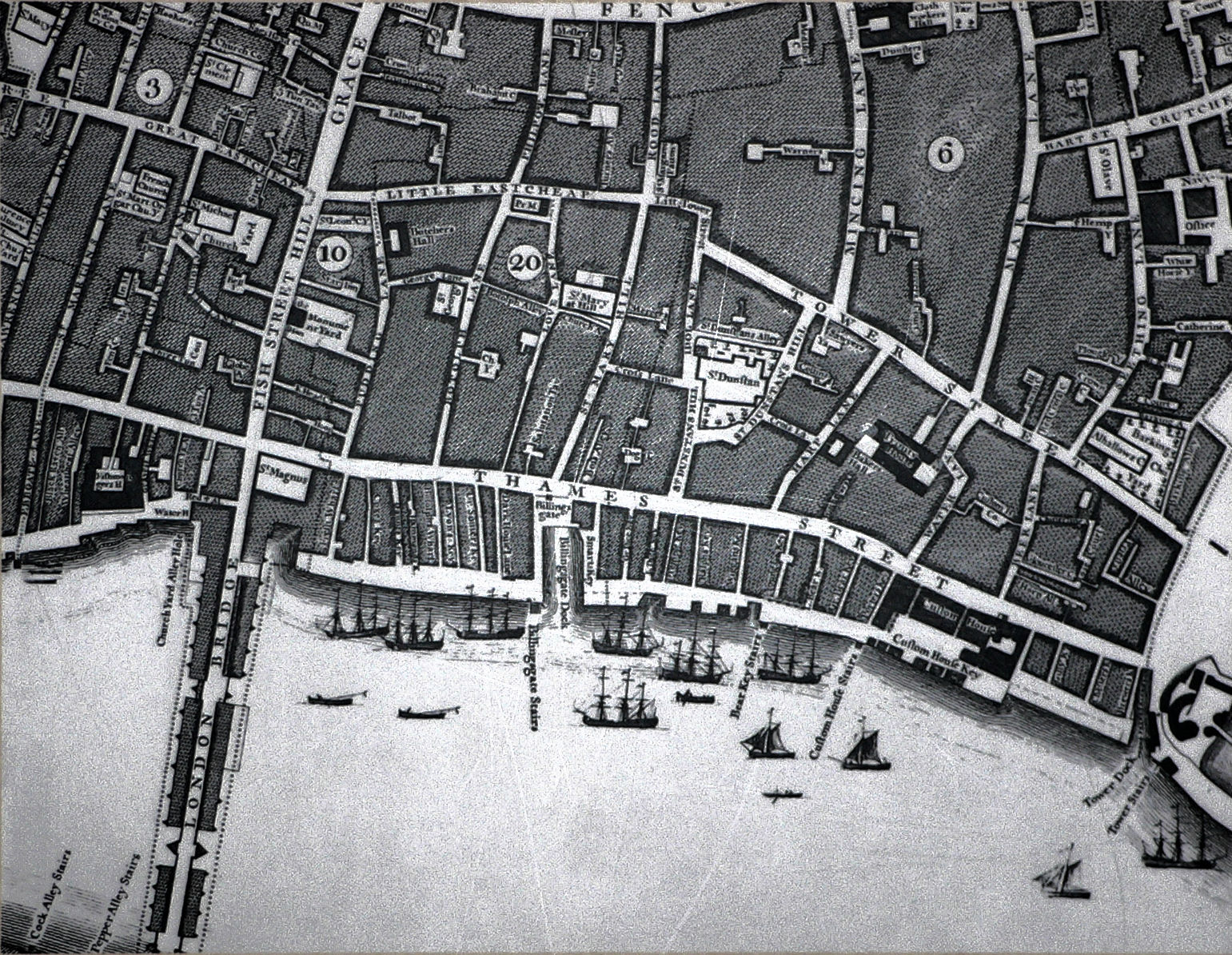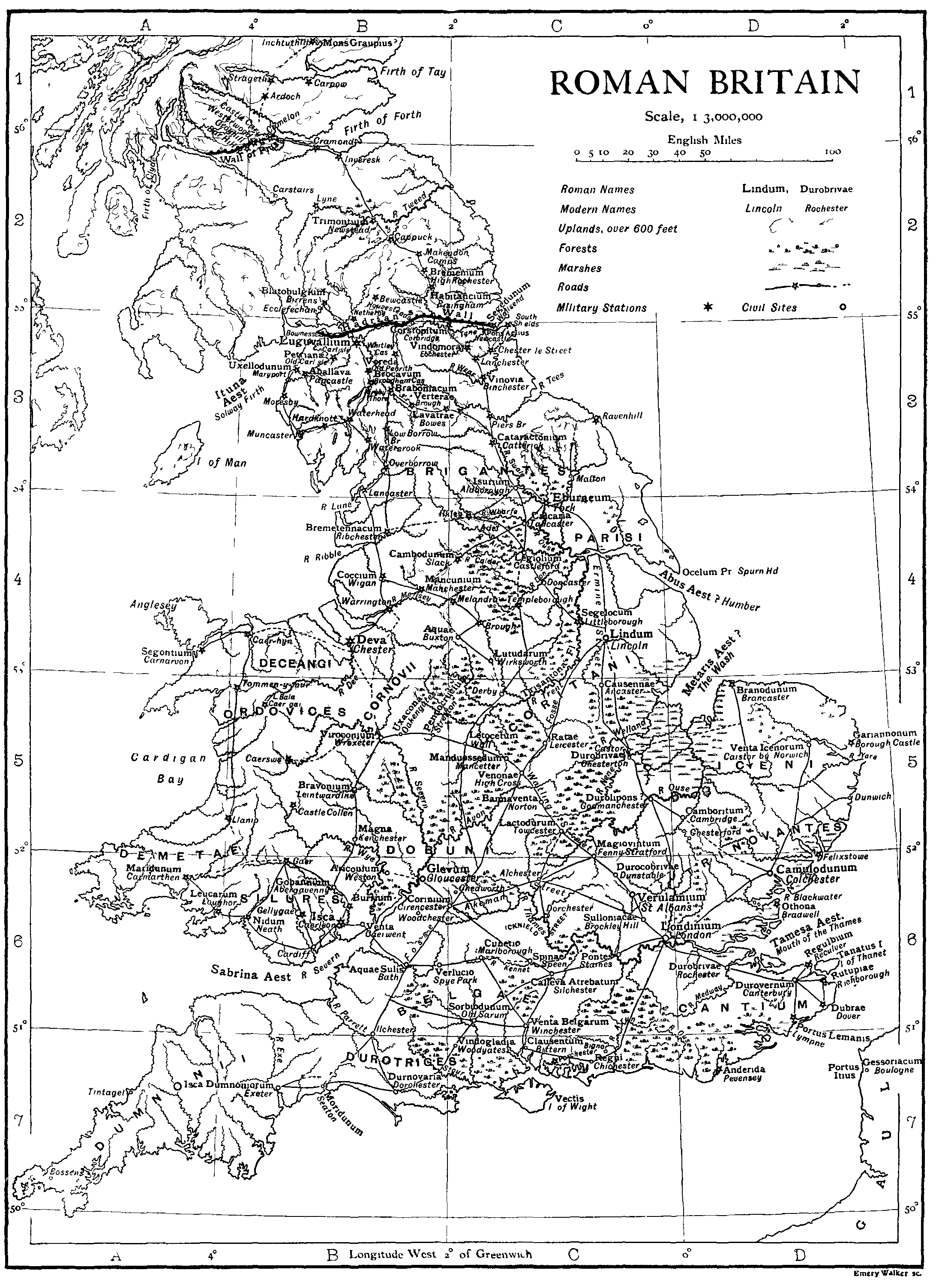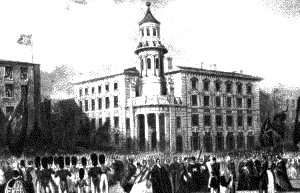|
Billingsgate Roman House And Baths
Billingsgate Roman House and Baths is an archaeological site in Londinium (Roman London). The best preserved parts of the house are a bath with hypocausts. The ruins of the ''tepidarium'' were discovered in 1848 while the Coal Exchange was built on the site. Its preservation on the instruction of J. B. Brunning is the earliest example of ''in situ'' preservation in the City of London. The remains were preserved and were visible in the cellar of the building. In 1967 to 1970, the Coal Exchange was replaced by another building and the Lower Thames Street was enlarged. Further excavations were made at the site and the remains were incorporated into the cellar of the new building, but were not open to the public. Pottery has shown that the Roman house was erected in the late 2nd century and had at this time a north and an east wing around a courtyard. There was most likely also a west wing but nothing of it survived. At this time the house was at the waterfront of the Thames. The ro ... [...More Info...] [...Related Items...] OR: [Wikipedia] [Google] [Baidu] |
Billingsgate Bath House, 23 September 2018 (13) (43208506210)
Billingsgate is one of the 25 Wards of the City of London. This small City Ward is situated on the north bank of the River Thames between London Bridge and Tower Bridge in the south-east of the Square Mile. The modern Ward extends south to the Thames, west to St Mary-at-Hill, Lovat Lane and Rood Lane, north to Fenchurch Street and Dunster Court, and east to Mark Lane, London, Mark Lane and St Dunstan-in-the-East, St Dunstan's Hill. History Legendary origin Billingsgate's most ancient historical reference is as a Watergate (architecture), water gate to the city of Trinovantum (the name given to London in medieval British legend), as mentioned in the ''Historia Regum Britanniae'' (Eng: ''History of the Kings of Britain'') written 1136 by Geoffrey of Monmouth. This work describes how Belinus, a legendary king of Britain said to have held the throne from about 390 BC, erected London's first fortified water gate: Historical origin Originally known as ''Blynesgate'' and ''Byllyns ... [...More Info...] [...Related Items...] OR: [Wikipedia] [Google] [Baidu] |
Londinium
Londinium, also known as Roman London, was the capital of Roman Britain during most of the period of Roman rule. Most twenty-first century historians think that it was originally a settlement established shortly after the Roman conquest of Britain, Claudian invasion of Britain, on the current site of the City of London, around 47–50 AD, but some defend an older view that the city originated in a defensive enclosure constructed during the Claudian invasion in 43 AD. Its earliest securely-dated structure is a timber drain of 47 AD. It had almost certainly been granted colony () status prior to the complete replanning of the city's street plan attending the erection of the great second forum around the year 120.Merrifieldp. 68./ref> By this time, Britain's provincial administration had also almost certainly been moved to Londinium from Camulodunum (now Colchester in Essex). The precise date of this change is unknown, and no surviving source explicitly states that Londinium w ... [...More Info...] [...Related Items...] OR: [Wikipedia] [Google] [Baidu] |
London
London is the Capital city, capital and List of urban areas in the United Kingdom, largest city of both England and the United Kingdom, with a population of in . London metropolitan area, Its wider metropolitan area is the largest in Western Europe, with a population of 14.9 million. London stands on the River Thames in southeast England, at the head of a tidal estuary down to the North Sea, and has been a major settlement for nearly 2,000 years. Its ancient core and financial centre, the City of London, was founded by the Roman Empire, Romans as Londinium and has retained its medieval boundaries. The City of Westminster, to the west of the City of London, has been the centuries-long host of Government of the United Kingdom, the national government and Parliament of the United Kingdom, parliament. London grew rapidly 19th-century London, in the 19th century, becoming the world's List of largest cities throughout history, largest city at the time. Since the 19th cen ... [...More Info...] [...Related Items...] OR: [Wikipedia] [Google] [Baidu] |
Hypocaust
A hypocaust () is a system of central heating in a building that produces and circulates hot air below the floor of a room, and may also warm the walls with a series of pipes through which the hot air passes. This air can warm the upper floors as well. The word derives from Ancient Greek ''hupó'' and ''kaustós'' (compare '' caustic''). The earliest reference to such a system suggests that the Temple of Ephesus in 350 BC was heated in this manner, although Vitruvius attributes its invention to Sergius Orata in c. 80 BC. Its invention improved the hygiene and living conditions of citizens, and was a forerunner of modern central heating. Roman operation Hypocausts were used for heating hot baths and other public buildings in ancient Rome. They were also used in private homes. It was considered proper and necessary by the wealthier merchant class for their villas, throughout the Roman Empire. The ruins of Roman hypocausts have been found throughout Europe (for example in It ... [...More Info...] [...Related Items...] OR: [Wikipedia] [Google] [Baidu] |
Tepidarium
The ''tepidarium'' was the warm (''tepidus'') bathroom of the thermae, Roman baths heated by a hypocaust or underfloor heating system. The speciality of a ''tepidarium'' is the pleasant feeling of constant radiant heat, which directly affects the human body from the walls and floor. There is an interesting example at Pompeii; this was covered with a semicircular barrel vault, decorated with reliefs in stucco, and round the room a series of square recesses or niches divided from one another by Atlas (architecture), telamones. The ''tepidarium'' was the great central hall, around which all the other halls were grouped, and which gave the key to the plans of the ''thermae''. It was probably the hall where the bathers first assembled prior to passing through the various hot baths (''caldarium'') or taking the cold bath (''frigidarium''). The ''tepidarium'' was decorated with the richest marbles and mosaics; it received its light through clerestory windows on the sides, the front, and t ... [...More Info...] [...Related Items...] OR: [Wikipedia] [Google] [Baidu] |
London Coal Exchange
The London Coal Exchange was situated on the north side of Thames Street in the City of London, nearly opposite to Old Billingsgate Market, occupying three different structures from 1770 to 1962. The original coal exchange opened in 1770. A second building from 1805 was replaced by a new purpose-built structure constructed from 1847 to 1849, and opened by Prince Albert on 30 October 1849. This third London coal exchange was one of the first substantial buildings constructed from cast iron, built several years before the hall at the Great Exhibition. It was demolished in 1962 to allow widening of what is now Lower Thames Street despite a campaign by the Victorian Society to save the building. Cast iron decorations from the 1849 Coal Exchange building were selected as the model for the dragon boundary mark for the main entrances to the City of London. Background Coal had been imported to London by sea since at least medieval times. A coal exchange was established in 1 ... [...More Info...] [...Related Items...] OR: [Wikipedia] [Google] [Baidu] |
Lower Thames Street
Thames Street, divided into Lower and Upper Thames Street, is a road in the City of London, the historic and financial centre of London. It forms part of the busy A3211 route (prior to being rebuilt as a major thoroughfare in the late 1960s, it was the B132) from Tower Hill to Westminster. The London Bridge underpass marks the divide between Upper and Lower Thames Street, with Lower to the east and Upper to the west. History Thames Street is mentioned in the diary of Samuel Pepys. The first mention of the road, however, is from 1013 when the custom house was founded on the street. During the reign of King Henry VIII, the street contained the London residences of many courtiers, including that of William Compton, where Henry VIII allegedly met his mistresses. Twentieth century In the culture of the 20th century, the street is probably best remembered for its place in T. S. Eliot's ''The Waste Land'': :O city city, I can sometimes hear :Beside a public bar in Lower Thames St ... [...More Info...] [...Related Items...] OR: [Wikipedia] [Google] [Baidu] |
Thames
The River Thames ( ), known alternatively in parts as the River Isis, is a river that flows through southern England including London. At , it is the longest river entirely in England and the second-longest in the United Kingdom, after the River Severn. The river rises at Thames Head in Gloucestershire and flows into the North Sea near Tilbury, Essex and Gravesend, Kent, via the Thames Estuary. From the west, it flows through Oxford (where it is sometimes called the Isis), Reading, Henley-on-Thames and Windsor. The Thames also drains the whole of Greater London. The lower reaches of the river are called the Tideway, derived from its long tidal reach up to Teddington Lock. Its tidal section includes most of its London stretch and has a rise and fall of . From Oxford to the estuary, the Thames drops by . Running through some of the drier parts of mainland Britain and heavily abstracted for drinking water, the Thames' discharge is low considering its length and bre ... [...More Info...] [...Related Items...] OR: [Wikipedia] [Google] [Baidu] |
Underfloor Heating
Underfloor heating and cooling is a form of Heating, ventilation, and air conditioning, central heating and cooling that achieves indoor climate control for thermal comfort using hydronics, hydronic or electrical heating elements embedded in a floor. Heating is achieved by Conduction (heat), conduction, radiation and convection. Use of underfloor heating dates back to the Neoglacial and Neolithic periods. History Underfloor heating has a long history back into the Neoglacial and Neolithic periods. Archeological digs in Asia and the Aleutian islands of Alaska reveal how the inhabitants drafted smoke from fires through stone covered trenches which were excavated in the floors of their subterranea (geography), subterranean dwellings. The hot smoke heated the floor stones and the heat then radiated into the living spaces. These early forms have evolved into modern systems using fluid filled pipes or electrical cables and mats. Below is a chronological overview of under floor heating ... [...More Info...] [...Related Items...] OR: [Wikipedia] [Google] [Baidu] |
Frigidarium
A ''frigidarium'' is one of the three main bath chambers of a Roman bath or ''thermae'', namely the cold room. It often contains a swimming pool. The succession of bathing activities in the ''thermae'' is not known with certainty, but it is thought that the bather would first go through the '' apodyterium'', where he would undress and store his clothes, and then enter the ''elaeothesium'' or ''unctuarium'' to be anointed with oil. After exercising in a special room or court, he would enjoy the hot room, known as ''calidarium'' or ''caldarium'', then the steam room (a moist '' sudatorium'' or a dry '' laconicum''), where he would most likely scrape the by now grimy oil with the help of a curved metal strigil off his skin, before finally moving to the ''frigidarium'' with its small pool of cold water or sometimes with a large swimming pool (though this, differently from the '' piscina natatoria'', was usually covered). The water could be also kept cold by using snow. The bather wo ... [...More Info...] [...Related Items...] OR: [Wikipedia] [Google] [Baidu] |
Caldarium
image:Caldarium.JPG, 230px, ''Caldarium'' from the Roman baths at Bath, Somerset, Bath, England. The floor has been removed to reveal the empty space where the hot air flowed through to heat the floor. A (also called a ''calidarium'', ''cella caldaria'' or ''cella coctilium'') was a room with a hot plunge bath, used in a Thermae, Roman bath complex. The boiler supplying hot water to a baths complex was also called . This was a very hot and steamy room heated by a hypocaust, an underfloor heating system using tunnels with hot air, heated by a furnace tended by slaves. It was also the hottest room in the regular sequence of bathing rooms; after the ''caldarium'', bathers would progress back through the ''tepidarium'' to the ''frigidarium''. A in both public and private baths followed a common plan which had three main parts. The common arrangement would include a warm-water bath -- usually called , but also referred to as or -- sunk into the floor, a semicircular alcove -- ... [...More Info...] [...Related Items...] OR: [Wikipedia] [Google] [Baidu] |
Roman Withdrawal From Britain
The end of Roman rule in Britain occurred as the military forces of Roman Britain withdrew to defend or seize the Western Roman Empire's continental core, leaving behind an autonomous post-Roman Britain. In 383, the usurper Magnus Maximus withdrew troops from northern and western Britain, probably leaving local warlords in charge. In 407, the usurper Constantine III took the remaining mobile Roman soldiers to Gaul in response to the crossing of the Rhine, and external attacks surged. The Romano-British deposed Roman officials around 410, and government largely reverted to city level. That year Emperor Honorius refused an appeal from Britain for military assistance. The following decades saw the collapse of urban life and the Anglo-Saxon settlement of Britain. Chronology 383–388 In 383, the Roman general then assigned to Britain, Magnus Maximus, launched his successful bid for imperial power, crossing to Gaul with his troops. He killed the Western Roman Emperor Gratian a ... [...More Info...] [...Related Items...] OR: [Wikipedia] [Google] [Baidu] |






